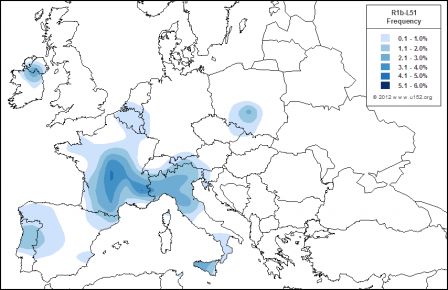berun
Regular Member
- Messages
- 1,084
- Reaction score
- 183
- Points
- 0
After checking the "archeoDNA" data, I had a mad idea about how IE would have spread. First let's look at the strange fact that the main IE languages are related to R1a (Germanic / Slavic / Baltic with Corded Ware, Indo-Iranic, and Tocharian), which leaves a bunch of regional IE languages out of the schema (Italic, Celtic from the Alpine arch, Venetic, Dacian-Thracian, Illyrian, Armenian, Greek). A more strange thing is how Yamnaya is supposed to have carried R1b to the West while it carried R1a to the North... when itself was 92% R1b (8% I2a2). A more strange fact is the genetical interruption of about 2200 BC, as the previous cultures of the Volga-Urals were mainly R1b; the Potapovka and Sintashta cultures change the results in the area to almost R1a all samples, and looking for this change it seems to come from the mix of the local Samara/Yamnaya/Poltavka (mainly R1b) with the Corded Ware/Fatyonovo/Abashevo (R1a). Of course the actual paradigm says that Yamnaya people or alike colonized Central Europe, but as far as i can see it's the opposite way, at least in Y-DNA.
The mad idea that R1a could be the real carrier of IE seems to be reflected in the fact that R1a Hunter-Gatherers are not in the Volga but in north Russia (samples in Psov, Karelia, Smolensk), and such genetic make-up continues with Corded Ware, and above all, it jusitifies the apparent expansion of R1a to Central Asia, India, Takkla Makan and so on; at least the expansion of IE seems more easy to explain than with Yamnaya but of course i'm not genetist neither an expert of history of such large region.
The mad idea that R1a could be the real carrier of IE seems to be reflected in the fact that R1a Hunter-Gatherers are not in the Volga but in north Russia (samples in Psov, Karelia, Smolensk), and such genetic make-up continues with Corded Ware, and above all, it jusitifies the apparent expansion of R1a to Central Asia, India, Takkla Makan and so on; at least the expansion of IE seems more easy to explain than with Yamnaya but of course i'm not genetist neither an expert of history of such large region.





